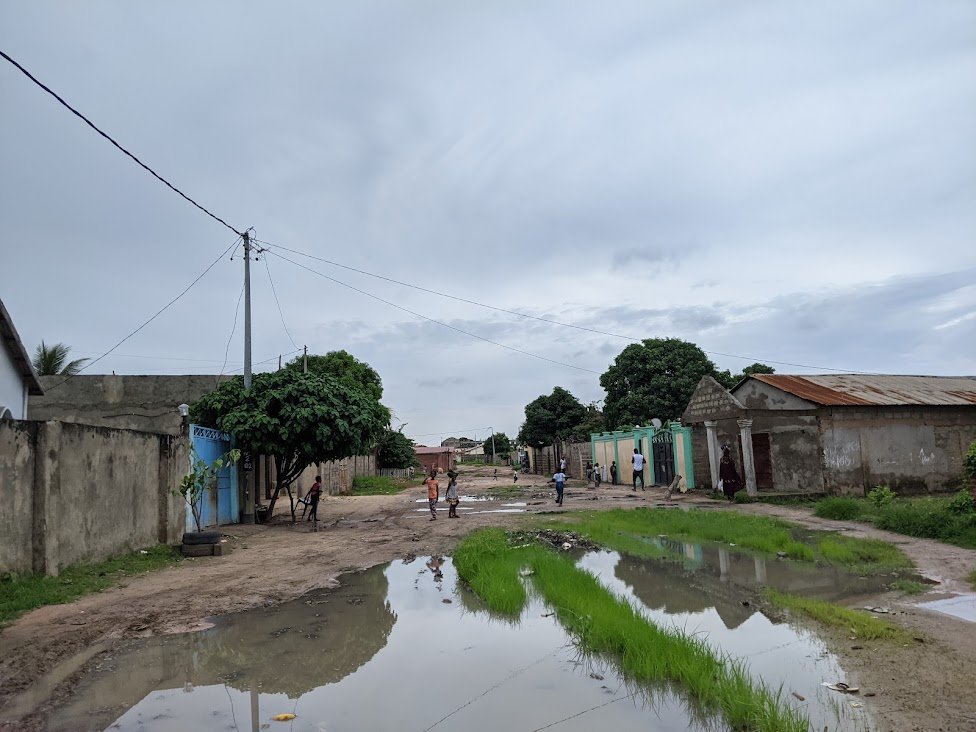Photography feature: glimpses of the Gambia
Through photographs Franca shares her own day-to-day experiences working as a non-local Research Assistant in The Gambia.
For the last two months I was volunteering at The Gambia Medical Research Council (MRC) as a research physician. During this time, I gained some insights into the communities and the ways of living and learnt a little bit more about the health seeking behaviours.
These photos reflect scenes I encountered in the ordinary course of my day working as a non-local medical professional. This experience provided me with a perspective that is not all encompassing of life in The Gambia, but rather a glimpse into my own perceptions.
Photography by Franca Conradis-Jansen
9.00am: Every day before work, my colleagues would stop for a sandwich with onions fried in palm oil and bean fritters, which costs about 15 Dalasi (roughly 20 pence). A piece of fruit is often more expensive. An apple, which can be found in every fruit stand, costs twice as much as they are imported—like much of the food consumed in The Gambia. My colleagues told me that many Gambians’ diet is low in fresh fruits and vegetables, not only due to lifestyle habits, but also because of costs. One survey showed that only 22% of the Gambian population eat 5 portions of fruit and vegetables daily.
Photography by Franca Conradis-Jansen
10.00am: We bounce up and down in the car as we drive along the bumpy roads of a peri-urban zone. Most of the roads and properties are unpaved. During the rainy season, the unpaved roads become waterlogged. Goats, donkeys, and dogs romp around, and children play in the puddles.
Photography by Franca Conradis-Jansen
11.00am: As part of my duties as a research physician on an observational trial, I visited households in urban and rural areas. I saw a high prevalence of skin diseases—particularly in children—including bacterial, fungal, or parasitic infections. Affected individuals or their parents had often not sought or found adequate medical attention yet, in some cases for long-lasting manifestations or deep abscesses. The prevalence of children in this area with skin infections after the rainy season can increase to 16%, and those with pyoderma to 23%.
12.00pm: We would often smell and see smoke in the courtyards we visited, as lunch was prepared. Commonly, tea or food is cooked on smoking coals in the courtyard or in a hut of the compound. According to the latest Demographic and Health Survey, 80% of households in The Gambia use charcoal or wood for cooking.
Photography by Franca Conradis-Jansen
5.00pm: In the evenings, I would sometimes go for a stroll in the market. On one occasion, I met a shopkeeper who told me that he considers the health system in the urban areas to work well, and only a small flat fee is charged for visiting health centres and hospitals. However, the field team I worked with said that there is varying quality in healthcare services and often shortages in medicines. In many cases, people have to pay for medicines out of their own pockets in pharmacies, which can be a relatively big expenditure, especially when it comes to chronic diseases. It is estimated that 20% of people spend more than 10% of their household consumption or income on out-of-pocket healthcare expenditure.
Photography by Franca Conradis-Jansen
6.00pm: On the beach front, many women sold fruit at stalls like these. Two years ago, these would have been bustling during the high tourist season, but COVID-19 has halted tourism in the country. The tourism industry is a major contributor to Gross Domestic Product in The Gambia and many are reliant on its revenue for their livelihoods. I spoke to a 20-year-old fruit seller who told me that her income from these stands assisted with her family’s expenses.
Photography by Franca Conradis-Jansen
7.00pm: In the evenings and on Sundays, the beach becomes a hub for exercise, including football, rugby, jogging, or gymnastics. The beaches are open to all social groups, but I observed very few women exercising. Lack of physical activity may be one of the factors contributing to the fact that women are twice as likely as men to be affected by obesity in The Gambia.






